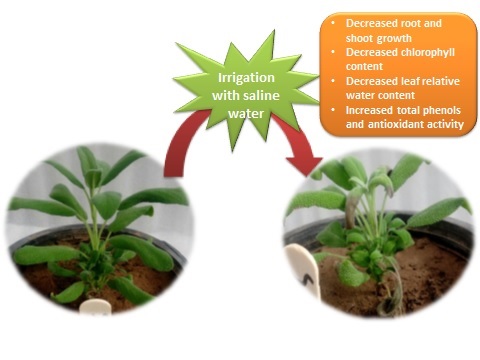Salinity effects on growth, chlorophyll content, total phenols, and antioxidant activity in Salvia lavandulifolia Vahl.

Published 2022-04-26
Keywords
- Biomass,
- electrolyte leakage,
- total flavonoids,
- water content
How to Cite
Abstract
Although the effect of salinity stress on some species of Salvia has been studied, so far no research has been done on S. lavandulifolia species. Therefore, a greenhouse pot experiment was carried out to investigate the impacts of salt stress on vegetative parameters, chlorophyll content, and antioxidants activity in Salvia lavandulifolia Vahl. Treatments included different irrigation water salinity levels (S0=1.3, S1=3.3, S2=5.3, S3=7.3, S4=9.3, S5=11.3, and S6=13.3 dS m-1) which were arranged in a completely randomized design. The results showed that salinity treatments significantly affected the plant growth attributes. The lowest plant height, leaf number, leaf length, and shoot dry weight was recorded in the S6 treated plants with 62%, 41%, 44%, and 82% decrease compared to the control, respectively. Treatment of S. lavandulifolia plants with the highest salinity level (S6) decreased the content of chlorophyll a, chlorophyll b, and total chlorophyll by 57%, 53%, and 54% compared to the control, respectively. Salt stress at all levels increased the total phenolic content, and the highest value was obtained in the S6 treated plants. Free radical scavenging capacity was significantly increased by all the levels of salinity stress, and the highest (85.14%) value was obtained in the S6 treated plants. In general, S. lavandulifolia can be classified as a species-sensitive plant.





